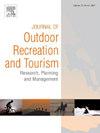Understanding exposure to avalanche terrain and avalanche information product use of snowshoers and winter hikers: Insights from Mount Seymour Provincial Park, British Columbia, Canada
IF 4.4
3区 管理学
Q1 HOSPITALITY, LEISURE, SPORT & TOURISM
Journal of Outdoor Recreation and Tourism-Research Planning and Management
Pub Date : 2025-10-11
DOI:10.1016/j.jort.2025.100968
引用次数: 0
Abstract
Snowshoeing and winter hiking have grown substantially in the last decade. To provide this community with better avalanche safety messages, it is critical to understand their existing avalanche awareness and safety practices. To address this knowledge gap, we conducted intercept interviews with snowshoers and winter hikers at a popular backcountry trailhead outside of Vancouver, British Columbia, Canada and surveyed students of introductory avalanche safety courses targeted at snowshoers. Study participants shared their typical trip destinations, which we used to determine their general exposure to avalanche terrain based on the Avalanche Terrain Exposure Scale (ATES). Despite the fact that all but one participant expose themselves to avalanche terrain, we found very low levels of avalanche awareness, formal training, and use of avalanche information products like the public avalanche forecast. Participants’ main reason for not using existing avalanche safety products and services was their belief that they do not expose themselves to avalanche terrain. This highlights that initiatives raising awareness of what constitutes avalanche terrain, how to recognize it and when it is safe to travel into are key starting points for improving avalanche safety practices in this community. Comparisons between study participants without formal avalanche safety training, current course students, and participants with training highlight the value of formal training and offer insights on potential pathways for raising avalanche awareness among snowshoers and winter hikers.
了解雪崩地形和雪崩信息产品使用的雪鞋和冬季徒步旅行者:来自加拿大不列颠哥伦比亚省西摩山省立公园的见解
在过去的十年里,雪鞋徒步和冬季徒步大大增加了。为了给这个群体提供更好的雪崩安全信息,了解他们现有的雪崩意识和安全实践是至关重要的。为了解决这一知识差距,我们在加拿大不列颠哥伦比亚省温哥华市外一个受欢迎的野外小径上对雪鞋爱好者和冬季徒步旅行者进行了拦截采访,并调查了针对雪鞋爱好者的雪崩安全入门课程的学生。研究参与者分享了他们的典型旅行目的地,我们根据雪崩地形暴露量表(ATES)来确定他们对雪崩地形的一般暴露。尽管除了一名参与者外,所有参与者都暴露在雪崩地形中,但我们发现雪崩意识、正式培训和雪崩信息产品(如公共雪崩预报)的使用水平非常低。参与者不使用现有雪崩安全产品和服务的主要原因是他们认为自己不会暴露在雪崩地形中。这突出表明,提高人们对雪崩地形的认识,如何识别它,何时进入是安全的,是改善这个社区雪崩安全实践的关键起点。没有接受过正式雪崩安全培训的研究参与者、正在参加课程的学生和接受过培训的参与者之间的比较突出了正式培训的价值,并为提高雪鞋和冬季徒步旅行者的雪崩意识提供了潜在的途径。
本文章由计算机程序翻译,如有差异,请以英文原文为准。
求助全文
约1分钟内获得全文
求助全文
来源期刊

Journal of Outdoor Recreation and Tourism-Research Planning and Management
HOSPITALITY, LEISURE, SPORT & TOURISM-
CiteScore
6.70
自引率
5.30%
发文量
84
期刊介绍:
Journal of Outdoor Recreation and Tourism offers a dedicated outlet for research relevant to social sciences and natural resources. The journal publishes peer reviewed original research on all aspects of outdoor recreation planning and management, covering the entire spectrum of settings from wilderness to urban outdoor recreation opportunities. It also focuses on new products and findings in nature based tourism and park management. JORT is an interdisciplinary and transdisciplinary journal, articles may focus on any aspect of theory, method, or concept of outdoor recreation research, planning or management, and interdisciplinary work is especially welcome, and may be of a theoretical and/or a case study nature. Depending on the topic of investigation, articles may be positioned within one academic discipline, or draw from several disciplines in an integrative manner, with overarching relevance to social sciences and natural resources. JORT is international in scope and attracts scholars from all reaches of the world to facilitate the exchange of ideas. As such, the journal enhances understanding of scientific knowledge, empirical results, and practitioners'' needs. Therefore in JORT each article is accompanied by an executive summary, written by the editors or authors, highlighting the planning and management relevant aspects of the article.
 求助内容:
求助内容: 应助结果提醒方式:
应助结果提醒方式:


